Stancliffe Estates Railway
Originally written by David Lathrope and published in The Peak Express, shared here with kind permission of Pete Waller.At first glance, there is very little visible evidence of the former private line which served the Estates’ quarries and works, and joined the mainline between Church Lane (formally Green Lane) level crossing and Darley Dale station. Even the pedestrian walkway under the A6 between South Park Avenue and Lime Grove in Darley Dale seems to be an unlikely candidate as a former standard gauge railway ‘tunnel’. However, the Stancliffe Estates quarries on the north side of the Derwent valley had a long association with the railway from Midland Railway (MR) days to those of the late 1930’s LMS.
Shortly after the Ambergate-Rowsley line opened in 1849 the company established a short siding two chains north of the Church Lane level crossing. This comprised a short section originally known as “Whitworth’s Siding”, with a crane and yard (in what is now the car park of the Church Inn on Church Lane. (see Map 1). Stone was largely moved by heavy horse and cart to this location. Bill Hudson (2) states that this siding was shown as closed in the MR’s 1909 annual amendments to its distance (signal) diagrams, but it most likely closed at an earlier date
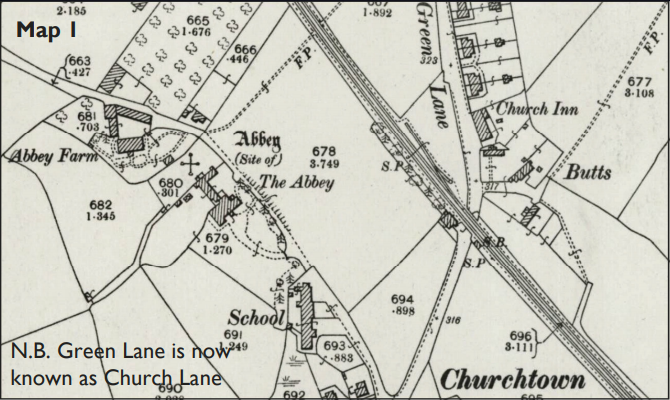
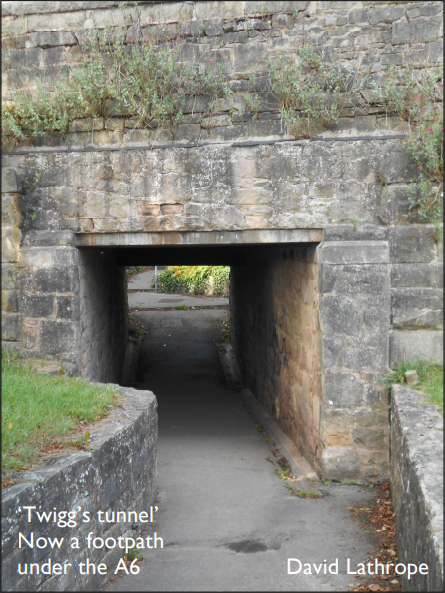
Whitworth’s siding was replaced by new sidings to the south of Church Lane crossing and the construction of a private railway to the Stancliffe stone yard and quarries. Again Bill Hudson notes that on 16th November 1899 the MR Traffic Committee submitted plans and estimates for these new Stancliffe Estates sidings.
This followed approvals by the North Darley Urban District Council and Derbyshire County Council for footpath diversions and ‘tunnel’ construction under the A6. The Derbyshire Times & Chesterfield Herald of 8th July 1899 reported on “a great barrier to trade progress to be moved”. The reporting was very positive about the benefits to the ratepayers including the removal of heavy road traffic, less damage to roads (saving money) and children being held up on the way to school at Church Lane crossing whilst shunting was taking place in Whitworth’s siding.
The same newspaper (24th August 1901) reported on trials and the opening of the first section of the railway from the main line to the stone yard. A ‘powerful’ loco had been purchased to negotiate the tight curves and steep gradients which was the 0-4-0 12in cylinder saddle tank named “Sir Joseph”. Present were the Managing Director of Stancliffe Estates, Joseph Henry Dawson JP, he contractor who built the line (Mortons of Manchester) and the loco manufacturer.
By April 1902, nine of the company’s horses, carts and related equipment were being sold at auction by Joseph Hodgkinson, a local auctioneer, following the opening of the railway.
The private branch line curved fairly sharply around the fields in a wiggly loop, through what is now the Willow Way and Oker Avenue estates. It crossed through a plantation at the north-west end of the Whitworth Institute Estate, before passing through a shallow cutting and tunnel under New Road (the A6). This tunnel was described at the time of construction as being “of solid workmanship” and is latterly known as “Twigg’s Tunnel”. It might well have been a cut and cover affair with the road surface reinstated afterwards. The line then proceeded through a deeper cutting (behind Peakland View), and under a wooden footbridge (carrying an existing footpath) before emerging in the Stancliffe stone works yard. The railway scheme was designed by Charles Edward Dawson (of Darley Dale) who was the company’s architect (see Map 2).
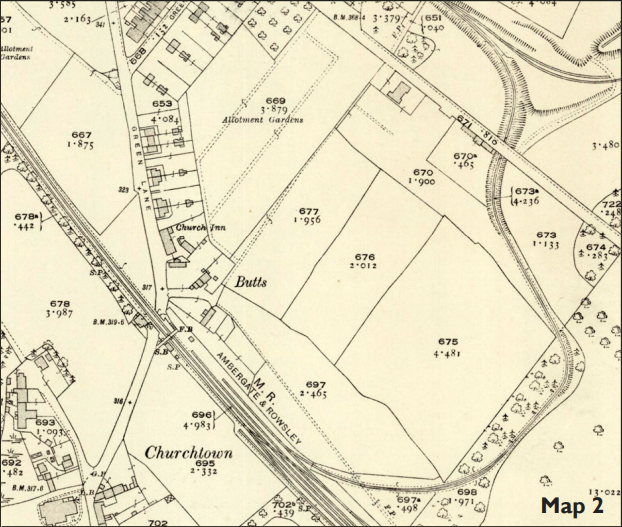
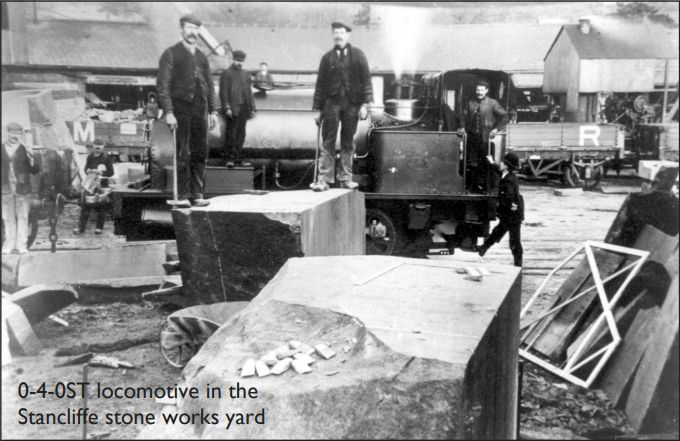
According to Charles Tolliday (3) the gradient back down to the main line required stone trains to go engine first into the head shunt. Empties were pushed back up to the yard. Some of the track may have been taken up and shipped to France during WW1, being reinstated after the war. The private railway ran until the end of the 1930’s. By this time the quarries were being worked out and road transport was emerging as an alternative to rail. A memo (4) to Rowsley Controllers dated 4th August 1939 instructed that “the practice of using the Stancliffe Company’s Sidings at Darley Dale... must now cease”. An entry in the LMS signalling notices dated 7th December 1941 (Rowsley Association Archives) advised that the siding and its associated ground frame was to be taken out (5).
During its years of operation, traction was mainly provided by two 0-6-0 saddle tanks* named Sir Joseph and Henry Dawson. These were built by Hudswell Clarke & Co. Ltd. of Leeds and purchased second hand in 1916 and 1917 respectively. The former replaced the original 0-4-0 ST, also named Sir Joseph, which was also built by Hudswell Clarke for the opening of the line in 1901. At times of maintenance, local Map 2 0-4-0ST locomotive in the Stancliffe stone works yard historians refer to a smaller green 0-4-0 loco named Canada which helped out, but this was relatively underpowered and struggled on sections of the 1 in 26 overall gradients on the quarry network. After being sold by Stancliffe Estates, the 0-6-0’s continued in service at various locations until scrapped in 1963. In his book, Lewis Jackson, who was born and lived on Darley Hillside, recalled as a youngster “the sound of engine exhaust and the clouds of steam [as the locos] beat their way up to the Hall Dale [Quarry] with one or two wagons, and also watching the locos going to and fro from the mainline to the Stancliffe yard. What tales of railway activities this old track bed could tell!”. (6)
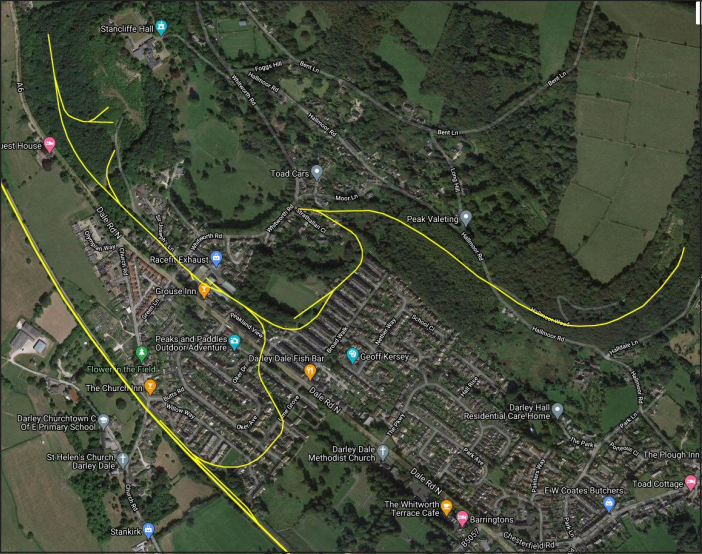
The reason that the railway could be heard all over Darley Hillside was that it had a wider network than just the link to the mainline in the valley bottom. Having passed under the A6 and through a cutting, a junction took a line up a steep incline between The Tipping recreation ground and the South Park Estate (Broadwalk). The former had been a quarry spoil site, top soiled and eventually turned into a recreation field.
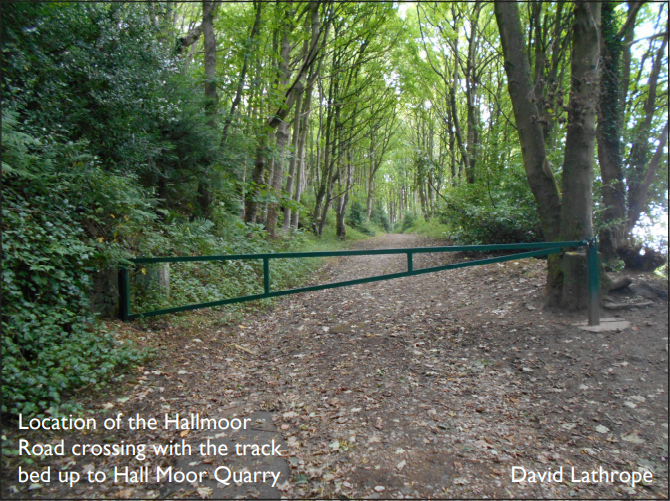
Running alongside the South Park Estate, the branch turned towards the west to the junction of Whitworth Road and Moor Lane (a bungalow now stands on this location). The track then headed east again in preparation for the steep climb up the hillside to Hall Moor Road. The line then ran through Hall Dale Wood above Hall Dale Lane, finally terminating in Hall Moor Quarry (from where the famous pink sandstone was obtained).
Lower down the hillside, another line left the stone works yard, crossed the Whitworth Road and then followed the path of what is now Sir Joseph’s Lane and into Stancliffe Quarry. One track split to the left, running parallel to the A6 almost as far as Firth Rixon Forgings (Arconic Engines) and splitting into other quarry areas.
For many centuries Stancliffe Stone was the stone of choice for many prestigious building projects. Locally, St. Helen’s church tower (1301) was built of this stone and of course the second gothic station at Darley Dale (1873) used it. Further afield the Buxton Crescent (1780’s), paving at London’s Trafalgar Square, Hyde Park Corner, Zoological Gardens and the Thames Embankment, the Walker Art Gallery and St. George’s Hall in Liverpool.
After the closure of line, stone traffic reverted to road haulage and gradually the main quarries were wound down. At their peak, they would have employed over 300 people. Stancliffe Estates Company closed in 1947, and the Stancliffe Stone Company Limited was formed to work the quarry. Subsequently other unrelated companies traded under this name. Today there is very little evidence of Darley Dale’s only private railway although the rumbling traffic overhead in Twigg’s Tunnel might echo the rumbling of trucks and one of the 0-6-0 ST’s on their way down to the mainline.
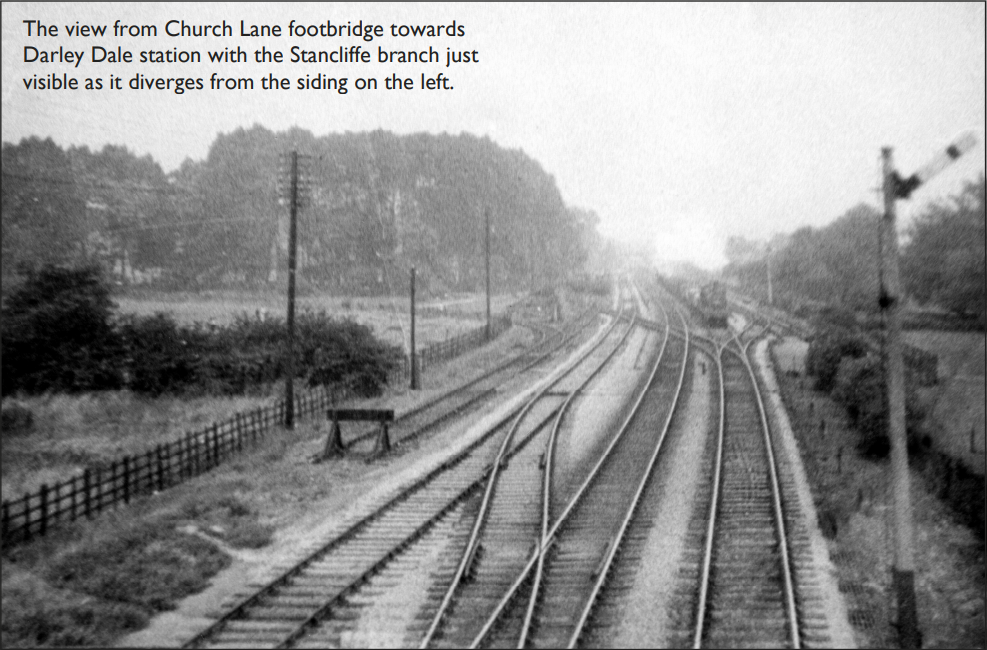
*Locomotive details supplied by Ian Bendall of the Industrial Locomotive Society (with thanks to Rob Pearman, Archivist). Thanks also to Glynn Waite and the Rowsley Association for various photos, maps and documents.
The maps are reproduced with the permission of the National Library of Scotland: https://maps.nls.uk/os/
The aerial photograph is from Google maps with overlay by Rail Map on Line: https://railmaponline.com
References:
- Taylor,Keith & Brown, Trevor A Derbyshire Parish at Peace and War: South Darley 1925-1955 Country Books, 2001. p76
- Hudson, Bill Through Limestone Hills: The Peak Line – Ambergate to Chinley Haynes Publishing Group (OPC), 1989. p19
- Rowsley Association Archives: Charles Toliday - notes. Stancliffe Miscellany
- Rowsley Association Archives: Memo to Rowsley Controllers. 4th August 1939. Stancliffe Miscellany
- Rowsley Association Archives: LMS signalling notice dated 7th December 1941. Stancliffe Miscellany.
- Jackson. Lewis. Darleys in the Dale: echoes from the valley. Country Books, 2002.